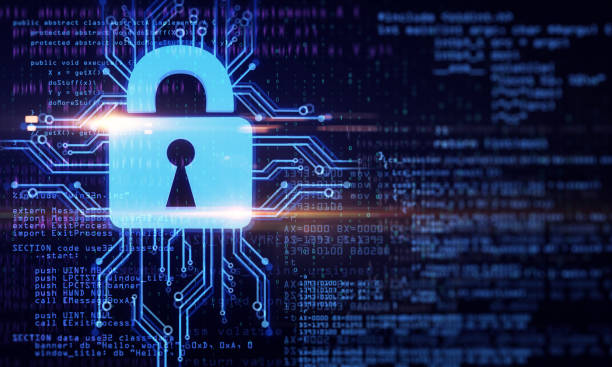Introduction to thejavasea.me Leaks AIO-TLP287
The phenomenon surrounding thejavasea.me leaks AIO-TLP287 has garnered significant attention in recent discussions regarding data security and privacy breaches. At its core, the AIO-TLP287 leak represents a substantial collection of sensitive information that has unfortunately been exposed to the public domain. The origin of these leaks can be traced back to a series of hacking incidents where cybercriminals infiltrated various systems to extract confidential data. This highlights the ongoing threats faced by organizations and individuals in an increasingly digital world.
The relevance of these leaks extends beyond mere curiosity; they have far-reaching implications for the parties involved. The exposure of sensitive information can lead to serious consequences, including identity theft, financial fraud, and reputational damage for organizations. The leaked data encompasses personal details, financial records, and other critical information, which could be exploited maliciously. As such, understanding this incident and its background is paramount for stakeholders concerned about online security.
Details and Impact of thejavasea.me Leaks AIO-TLP287
The recent leaks associated with thejavasea.me, specifically labeled AIO-TLP287, have unveiled substantial concerns regarding data security and privacy. The nature of the information leaked spans multiple domains, including personal identification details, financial data, and sensitive communications. Such intricate data can have far-reaching implications for both individuals and businesses, potentially leading to identity theft, financial fraud, and erosion of trust.
The methods employed for acquiring these leaks appear to encompass a combination of sophisticated hacking techniques and social engineering tactics. Cybercriminals often exploit vulnerabilities within systems or employ phishing schemes to gain unauthorized access. As the investigation unfolds, it highlights the evolving landscape of cyber threats and the necessity for organizations to bolster their cybersecurity measures. The timeline of the leaks indicates a gradual escalation, with initial small-scale breaches evolving into more extensive exposures, further accentuating the need for vigilance.
The impact of thejavasea.me leaks is multifaceted. Individuals whose information has been compromised may face immediate repercussions, including financial losses and reputational damage. For businesses, the fallout can lead to significant legal liabilities, regulatory penalties, and an adverse effect on customer relationships. Moreover, the leaks raise pertinent questions about data stewardship, compelling organizations to reassess their data protection protocols and privacy policies.
Data privacy concerns cannot be overstated, especially in an era where digital information is paramount. The repercussions of AIO-TLP287 extend beyond immediate financial implications; they signal a systemic risk to digital infrastructures. Consequently, it is crucial for affected parties to remain informed and proactive in protecting their data. The ongoing analysis of this incident is essential to understand its full impact and implement appropriate preventive strategies moving forward.

Response and Mitigation Strategies
The emergence of thejavasea.me leaks AIO-TLP287 has raised significant concerns among organizations and individuals regarding their data security. Immediate response to such leaks is crucial to mitigate damages and protect sensitive information from further exposure. Firstly, if you suspect that your data has been compromised, it is essential to act swiftly. Start by changing passwords associated with affected accounts and enable two-factor authentication where possible. This adds an extra layer of security, making unauthorized access more difficult.
Additionally, individuals should monitor their financial accounts and credit reports for any suspicious activities, as leaked data can be exploited for identity theft. It may also be prudent to consider freezing credit to prevent unauthorized accounts from being opened in your name. For organizations, conducting a thorough investigation to assess the extent of the data breach is critical. This includes identifying vulnerable systems, securing them, and informing affected stakeholders about the breach.
In terms of legal ramifications, data breaches can expose organizations to regulatory penalties, lawsuits, and reputational damage. Hence, it is vital to consult with legal experts to understand the potential implications and ensure compliance with data protection regulations. From a long-term perspective, businesses should implement a robust data security framework. This involves regular audits, employee training on cybersecurity best practices, and adopting advanced technology solutions such as encryption and intrusion detection systems.
Furthermore, organizations should create and rehearse an incident response plan that outlines roles, responsibilities, and steps to take in the event of a data breach. This preparation can greatly enhance response efficiency and minimize potential harm. Overall, being proactive in safeguarding sensitive information is essential for both individuals and organizations in the wake of thejavasea.me leaks AIO-TLP287.
Future Implications and Security Trends
The recent leaks associated with thejavasea.me leaks AIO-TLP287 raise critical concerns regarding the future of online security and data privacy. As data breaches become increasingly prevalent, the frequency and sophistication of such incidents signal a shifting landscape in cybersecurity. Organizations must adapt to these evolving threats by implementing robust security measures that go beyond traditional defenses. The implications of these leaks extend beyond immediate financial damage; they influence public trust and could lead to significant changes in regulatory frameworks.
In response to these trends, there is an anticipated push towards stricter legislation governing data privacy and security. Countries are likely to reconsider their legal frameworks to ensure that organizations are held accountable for data protection standards. This could result in heavier penalties for companies that fail to safeguard sensitive information effectively. Additionally, businesses will need to navigate a complex landscape characterized by differing regulations across jurisdictions, highlighting the importance of compliance and risk management strategies.
As organizations confront these challenges, a proactive approach to cybersecurity will become paramount. This involves not only investing in advanced security technologies but also fostering a culture of security awareness among employees. Training and educating personnel on recognizing potential threats, such as phishing attacks or security anomalies, can significantly bolster an organization’s defense against breaches. Furthermore, integrating machine learning and artificial intelligence into cybersecurity strategies can help identify and mitigate risks in real-time.
Looking ahead, the future landscape of data protection will likely emphasize a holistic approach, wherein companies prioritize collaboration with stakeholders, including customers and regulatory bodies. Such engagement can enhance transparency and accountability in data handling practices. Moreover, as individuals and businesses become more conscious of data privacy, there may be an increasing demand for innovative solutions that empower users to control their own data. This evolution in perception and practice will shape the trajectory of online security and data protection in a digitally interconnected world.




